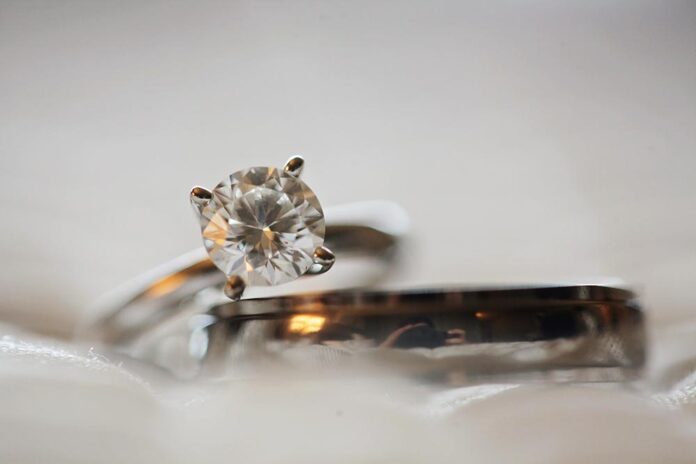As real diamonds that they are, lab-grown diamonds are graded using four major qualities: cut, colour, clarity, and carat. These are unique properties that work to determine the final quality of lab-grown diamonds.
Cut
The cut of a lab-grown diamond is a measure of its shape, geometry, and finish. Diamonds are furnished with facets and angles that improve their brilliance and make them reflect light. This design into facets defines the cut of a diamond. The shape on the other hand determines how the diamond appears after it sits in its frame.
Common cuts for lab-grown diamonds are brilliant, radiant, cabochon, and cushion while popular shapes include oval, emerald, pear, princess, and marquise.
The cut and shape of a diamond are features that often go together and many tend to mix them up although they are not the same. Also, some cuts are thought to go better with certain shapes for the best radiant finish.

Colour
In simple terms, the colour is a measure of the tone or hue a lab-grown diamond comes in. Diamond in its natural state is colourless. However, certain inclusions such as nitrogen may cause it to have a yellowish to brownish undertone. Other kinds of inclusions will result in diamonds of other colours such as green or pink.
Ideally, a lab-grown diamond would be colourless since it is made under controlled conditions. However, some persons prefer the idea of having their diamond in a certain colour instead of going for another gemstone with such colour tone. Therefore, we can have lab-grown and natural diamonds in different colours, which can be called fancy colour diamonds.
Clarity
The clarity of a lab-grown diamond is a measure of how much inclusions or flaws it contains. Inclusions are either defects or foreign particles that occur naturally in a diamond crystal as it is growing. Although lab-grown diamonds tend to contain less inclusions than mined diamonds, they are totally not devoid of inclusions and other blemishes.
Diamonds are graded using a combination of numbers and letters to show how much flaw they contain.
- FL-IF: Internally Flawless
- VVS1-VVS2: Very Very Slight Inclusions
- VS1-VS2: Very Slight Inclusions
- SI1-SI2: Slight Inclusions
- I1-I3: Included
I1-13 grades of diamonds contain inclusions that can be seen with the naked eye. Other grades of diamond would often require a kind of magnification tool or the other to detect the presence of inclusions.

Carat Size
The carat size of a diamond or any other precious stone is a measure of its weight. One carat is exactly 1/5 of a gram (0.2g). Gem designers work on diamonds such that the carat size is commensurate to the visual size of the diamond. Of course, some kinds of cut or shape may cause a lab-grown diamond to look larger or smaller than its actual carat size.
The carat size is also the most use property for determining the price of a lab-grown diamond. the higher the carat size, the more expensive it becomes.
What Do the 4Cs Say About a Lab Diamond?
The 4Cs of a diamond tell you a lot about the overall quality of the gemstone. The summation of these qualities plays a huge one on the final price of the diamond. Although the carat size is the first defining quality for setting price, two diamonds of the same carat size may vary in price due to their cut, colour, clarity, or a combination of all.
While transparent diamonds are the most common, other colours of diamonds are preferred by some persons. Therefore, the colour of a diamond can make it more expensive or cheaper. Also, some gem cuts are thought to be more classy or make more carat of diamond than others. Therefore, they will be more expensive.
It is important to understand how all of these features work together to determine the overall acceptance and cost of a diamond. If you are not sure why a particular lab-grown diamond is so expensive or cheap, or what implications any of its 4Cs have, you should ask the jewellery store attendant about it before buying. For jewellery makers, you should find trustworthy lab gemstone suppliers such as BIRON® to source high quality lab diamonds for your artisanal pieces.
When you buy a lab-grown diamond, its grading report or certification contains information about the 4Cs of the diamond. It is important to not overlook these features, especially before sealing the deal. Checking them informs you of the quality of the diamond and can also give you an idea of how expensive it should be.
##



